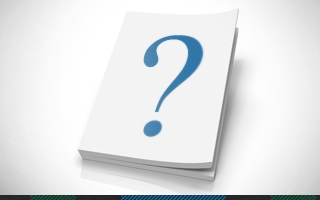 Book covers matter. Every potential reader forms their opinion of a book based in part on their impression of the book’s cover. That opinion helps them answer the following questions:
Book covers matter. Every potential reader forms their opinion of a book based in part on their impression of the book’s cover. That opinion helps them answer the following questions:
Is the author credible?
Is the book high quality or low budget?
Was the book professionally produced or created by amateurs?
Does the value of the book justify the price?
Should I buy this book?
In my various roles at Thomas Nelson over the past 20+ years, I have seen thousands of book covers. As an author, one of your responsibilities is to make sure you avoid making common errors such as neglecting to communicate important information that readers hope to obtain from the cover.
5 things a potential reader is looking to decipher from your book’s cover:
Topic/Category/Genre: Every book cover should quickly establish the subject matter covered between the covers because you just have a few seconds to communicate what your book is about. Fiction books tend to have covers that shout their genre, while self-help and many other nonfiction books tend to have a professional looking picture of the author.
Tone: Fiction books should have covers that communicate the author’s style and voice. Literary fiction covers tend to have more stylized, smaller fonts and softer colors than commercial fiction. With hundreds, if not thousands, of competitive books in just about every subcategory available, establishing what is slightly different about your book can make the difference between getting purchased and gathering dust.
Scope: One of the ways nonfiction books tend to differ from one another is their scope, or how much information the author is attempting to provide. Is the book a superficial review of several related topics, or is it an in-depth study of a particular subject in a narrow subcategory? The cover (including the title and subtitle) should help the reader understand what they can expect.
Interest: While we’ve all heard that we “can’t judge a book by its cover,” we still do. We tend to overlook any book that does not catch our eye and immediately pique our interest. The principles of advertising design must be used to grab the readers’ attention—or at least grab it just as much as the leading books on the topic.
Prominence: The cover establishes the book’s position relative to the other books on the topic. Is it the bestseller, the newest information, the most extensive?
The objective of a cover is to position your self-published book as being just as strong as the traditionally published books it is competing with so that the potential reader considers it an option and investigates further after just a glance. With this in mind, each book that is intended to compete with other professionally produced books should have a cover designed by a professional. If you are a graphic design professional then you can design a cover that puts your book on an equal footing with other books. If not, you should collaborate with an experienced cover designer, or consider purchasing our Elite Cover Design service to give your book a professional looking cover.
How important do you believe it is to have a great cover design? What is an example of a great book cover and why?
Pete Nikolai has been a publishing professional for more than 20 years and is Director of Publishing Services for Thomas Nelson Publishers. He led the creation and launch of Nelson’s self-publishing division, WestBow Press, which he continues to manage. He blogs at PeteNikolai.com and can be reached via Twitter @PFNikolai and on LinkedIn.

My husband and I are wanting to buy the top package with Westbow for my story ‘The Book of Life that Leonard Told’ – I have been dealing with Jon Lineback who has been incredibly helpful, but separate from him, can Westbow provide as much benefits in terms of ongoing exposure when compared to a partner publisher (Creation House) who want the book also? Also can the cover be embossed and gloss mixed with matte?
Hi Kylie,
We have received your questions and have passed them on to your Publishing Consultant, Jon Lineback. He will be in contact with you to help answer these questions, and any other questions you might have.
Thank you,
WestBow Press